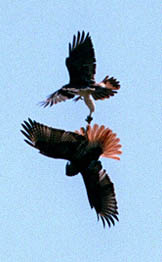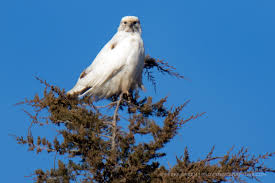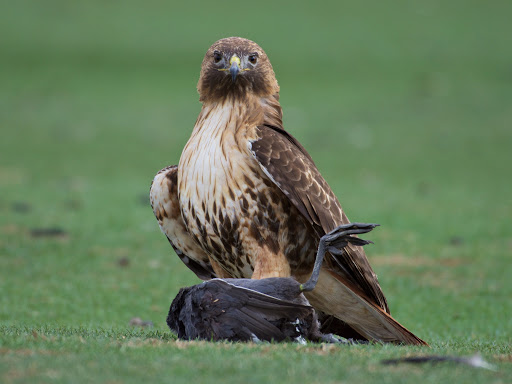by DJ Featherton

In the Old World, all large birds of prey were simply called buzzards. In the New World, we call them hawks. Seeing birds of prey is exciting for even non-bird enthusiasts, and knowing the basics makes seeing these great birds even more exciting. Here’s some basics for identification. Falcons are a bird of prey, generally medium-sized, have narrow, pointed wings, are very fast and attack their prey in midair. Accipiters are woodland hawks that have a shorter, rounded wing and a long, banded tail. They can fly like a jet through thick tree cover and snatch a perched song bird faster than lightning! Last is the Buteo. Buteos are large, heavy-bodied hawks with shorter, fan shaped tails. Their wings are long and wide so they can soar high in the currents looking down for small unsuspecting mammals. If the Falcons and Accipiters are the sleek, high speed attack jets, then the Buteos are the slower, high flyin’, heavy bombers. The Red-tailed Hawk is the biggest and most common Buteo hawk. If, “You can sit and talk, and watch a hawk making lazy circles in the sky,” then you are probably watching a Red-tailed Hawk! (Even if you’re not in Oklahoma!)
The Red-tailed Hawk is a favorite. They’re big and majestic, and can easily be seen perched on fence posts, telephone poles or tall trees at the edge of an open field. The Red-tail frequently hunts together with his mate. With both birds perched on opposite sides of a large tree, the squirrels don’t have a chance. It’s common to see these two big hawks circling together to maximize their hunting efforts. One of the easiest ways to see Red-tailed Hawks is to take a drive down the Interstate and watch for these big, rich-brown birds with a light stripey-breast perched in the sun on a tree branch along the road. When in flight, their rufous-red tail shows off, and it’s obvious how they got their name.
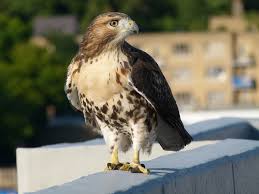

The Red-tailed Hawk’s range is from Alaska, through southern Canada, and across every state in the U.S. Mexico and the islands are also home to these hawks. Some Red-tails will migrate further south in winter, but most are permanent all year. They build large nests of sticks and twigs lined with bark and newer vegetation, and will nest in tall trees, towers, or even on the ledges of tall buildings in the city. They will brood once a year with a clutch of 1-5 eggs.
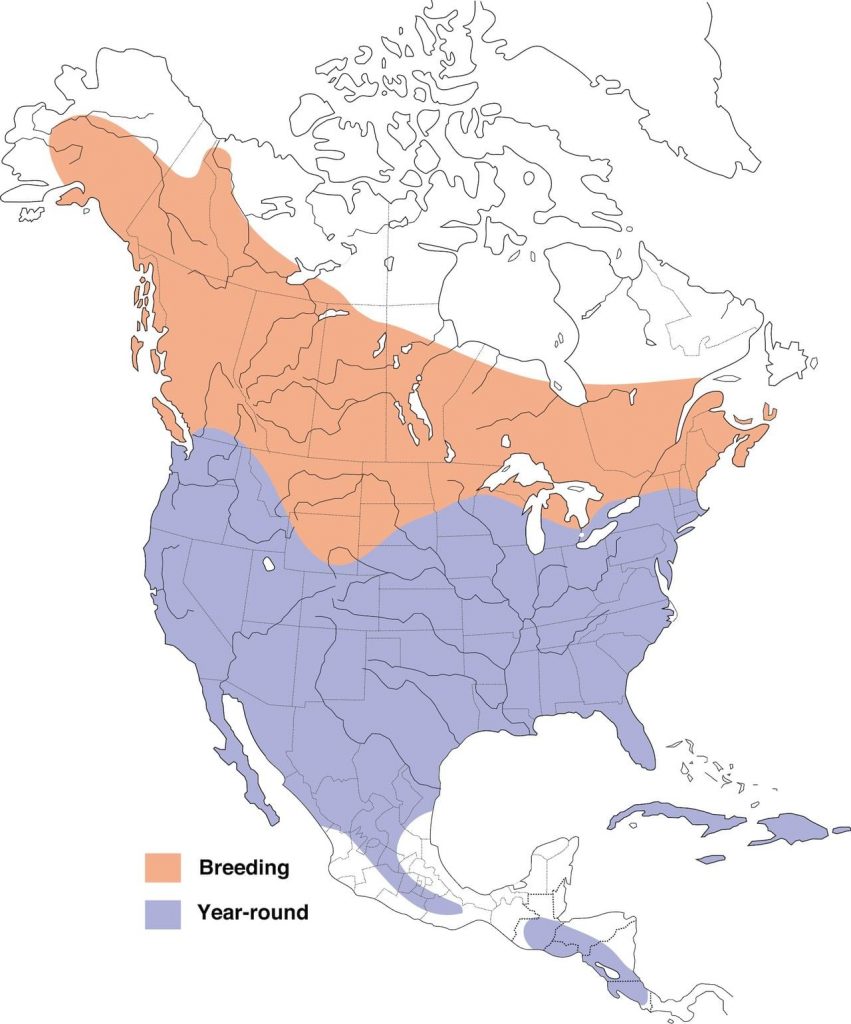
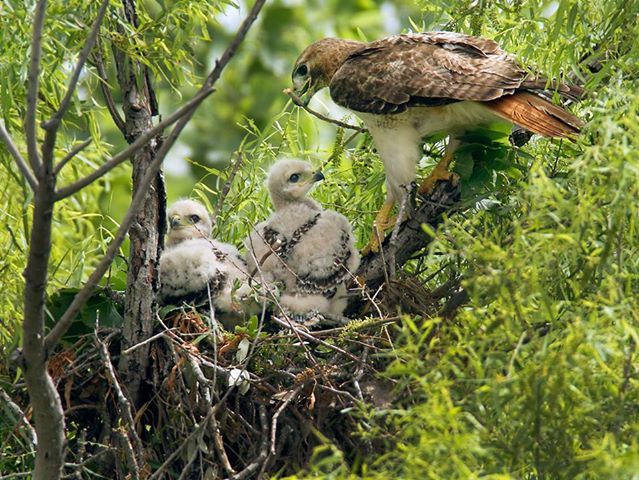
Because these large hawks easily adapt to human development, their population remains high. Adults have a wingspan of nearly four and a half feet, and stand over two feet tall. Many people think they’re seeing an eagle. The Red-tail’s screechy hawk-call is familiar to most, and can be heard in just about every western movie ever made. Common as they are, the Red-tail is always a thrill to see.
Red-tailed Hawks are seldom seen at the feeder, and if so, they’re not eating seed! I have seen pictures of a Red-tail at a feeder and he was so big that he looked ridiculous! I’d say, if you want to start knowing your hawks, begin with the biggest and beautiful Red-tails. Grab your trusty binoculars and head to the edge of the woods. If you’re lucky, you’ll see these great birds in flight diving at each other, catching talons, and tumbling through the air as part of their mating ritual. Ya never know what you’ll see. That’s birding! See ya out there.

